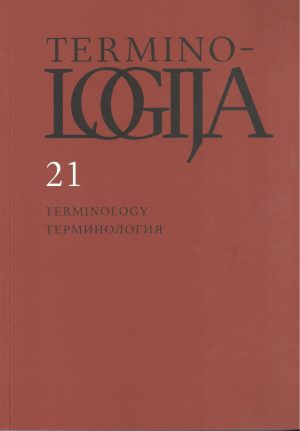Pirmojo lietuviško medicinos mokslo žurnalo dvižodžiai ir trižodžiai sudėtiniai terminai
Two-word and three-word complex terms of the first Lithuanian journal of medical science
Author(s): Palmira ZemlevičiūtėSubject(s): Theoretical Linguistics, Lexis, Descriptive linguistics, Health and medicine and law
Published by: Lietuvių Kalbos Institutas
Summary/Abstract: The article deals with two-word and three-word complex terms naming specific concepts of medicine used in articles written or translated by doctors for the first Lithuanian journal of medical science Medicina ir gamta (Medicine and nature), published for the first time in 1913. The terms are analyzed in respect of the syntactic relations between the main and complementary elements of terms as well as the origin and the grammatical expression of the element in the position of an attribute. Two-word and three-word complex terms consisting of elements of Lithuanian or mixed origin make up 38% of terms of medicine used in the journal. The majority of terms are two-word terms. Word-combinations with an attribute not in concord (expressed in genitive in singular or in plural) prevail, for instance galvos kaušas “kaukolė” (skull), plaučių džiova “plaučių tuberkuliozė” (tuberculosis of lungs). Attributes not in concord expressed in other cases or cases with prepositions are significantly less common. There are half as many word-combinations with an attribute in concord. Such attributes are most often expressed in adjectives with the suffix -inis derived from primary or derivative (prefixal and suffixal) nouns and to some extent in adjectives, for instance žiotkaulis viršutinis “viršutinis žandikaulis” (upper jaw), sausas kosulys (dry cough), pirmoji pagalba (first aid). Active and passive voice simple and pronominal participles as attributes are not very common and wordcombinations with an attribute connected by adjoinment are even rarer.
Journal: Terminologija
- Issue Year: 2014
- Issue No: 21
- Page Range: 160-175
- Page Count: 16
- Language: Lithuanian

